Concorde was futuristic even as it was retired from service in October 2003. Two decades later, there is revived interest in commercial supersonic passenger transport – but a return to truly high-speed passenger flight remains years away.
Aside from the technical task of producing new aircraft and engines for the environment beyond Mach 1, the speed of sound, there is the challenge of making supersonic air travel commercially viable. Tied closely into feasibility is the impact of sonic booms on populated areas.
Boom Supersonic
The Denver, Colorado-based Boom Supersonic is the highest-profile organisation working on a new supersonic airliner. The company hopes to bring its design, Overture, to market in 2029. United Airlines (15 aircraft plus 35 options) and American Airlines (20 plus 40 options) have placed commitments.
Overture will have 65 to 88 seats, a Mach 1.7 cruise speed and 4,250 nautical miles range. Concorde, by comparison, carried 100 passengers, cruised at Mach 2 and had 4,150 miles range.
A factory in the city of Greensboro in North Carolina, due for completion in 2024, will house the final assembly line for Overture. Boom plans to roll out a prototype in 2026 and fly it in 2027.
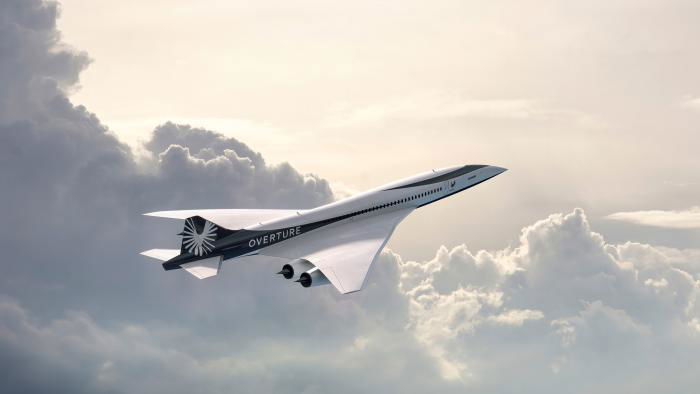
The initial Overture design featured highly-swept wings and angular underwing engine intakes. Revisions unveiled at Farnborough International 2022 show four non-afterburning high-bypass engines and a gull wing.
In written testimony to the US House of Representatives Transportation Committee in April 2021, Boom CEO Blake Scholl claimed the company is “redefining what it means to travel long distances.”
Scholl wrote: “We envision a future in which anyone can buy a ticket and enjoy the benefits of high-speed travel. Aboard Overture, London would be just 3.5 hours from New York, and Sydney becomes as accessible as Honolulu is today. With Overture, three-day business trips could be done in just one day.”
In June 2023, Boom announced agreements with Aernnova for Overture’s wings, Leonardo for the fuselage and wing box, and Aciturri for the empennage. Safran Landing Systems, Eaton, Collins Aerospace, Flight Safety International, Florida Turbine Technologies (FTT), GE Additive and StandardAero are other suppliers.
Boom initially planned to develop an engine for Overture with Rolls-Royce, but in 2023 announced a partnership with FTT, GE Additive and StandardAero to develop a 35,000lbf-thrust, medium-bypass engine for the aircraft called Symphony.
Designed to meet ICAO Chapter 14 noise levels, Symphony will be certified to US Federal Aviation Administration (FAA) and European Union Aviation Safety Agency Part 33 requirements.

Boom has developed a technology demonstrator for Overture called the XB-1, a 71ft-long, carbon-fibre composite/titanium aircraft featuring an ogive (modified delta) wing and three General Electric J85 engines producing 12,300lbf maximum take-off thrust.
Boom started XB-1 ground-testing at Mojave Air and Space Port in New Mexico in 2023. The company has received an experimental airworthiness certificate for the aircraft from the FAA and permission for test flights over the Mojave Desert.
Spike S-512
Various other companies have explored the high-speed realm. Aerion Supersonic proposed a supersonic business jet called AS2 (the company closed down in 2021).
Boston, Massachusetts-based Spike Aerospace is working on a supersonic business jet called the S-512. This 18-seat, Mach 1.6-capable aircraft will have no windows: multiple 360o external cameras around the airframe will provide live video feeds for HD digital displays on the cabin walls to generate a composite virtual view of the outside world.

Spike Aerospace says the S-512 design is currently in its fourth iteration: “Thousands of engineering hours have been spent studying each of the concepts and optimising the aircraft’s performance to meet the needs of very demanding customers and regulators...Design continues to be improved upon as we learn from further analysis and our first prototypes.”
In 2019 Lockheed Martin announced a concept delta-wing, twin-tail Quiet Supersonic Technology Airliner with a Mach 1.8 cruise speed, 5,200nm range and 40 seats. The following year, space-tourism specialist Virgin Galactic announced research into a Mach 3 delta-wing aircraft seating 19 passengers. Neither Lockheed Martin nor Virgin Galactic has provided updates since.
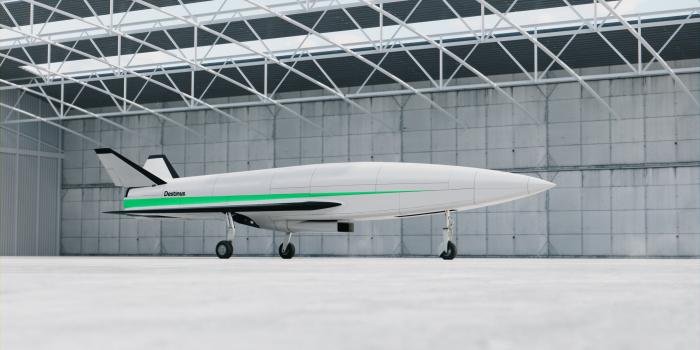
Destinus
Some developers want to go even faster than supersonic speeds and into the hypersonic range – Mach 5 plus, or more than five times the speed of sound.
A Swiss company, Destinus, is working on a concept 25-seat, Mach-5 airliner, Destinus S. The company plans to begin test-flying Destinus 3, an uncrewed 10m-long supersonic demonstrator, in 2024 as a stepping-stone.
Reaction Engines is researching hypersonic flight with its proprietary SABRE (Synergetic Air-Breathing Rocket Engine) technology. The Oxfordshire-based company describes SABRE as “a new class of engine” combining jet-engine efficiency and a rocket’s high-speed capability, offering “the potential to provide ‘air-breathing’ thrust from standstill on the runway to speeds above Mach 5 in the atmosphere.”
In 2020 Rolls-Royce announced a collaboration with Reaction Engines to explore applications for SABRE “within civil and defence aerospace gas turbine engines and hybrid-electric systems.”
Boom times
Air travels at a maximum speed of Mach 1, around 767mph at sea level. Any moving object pushes air molecules, but there is a limit as to how quickly air can move away from something travelling so quickly.
At the speed of sound, air molecules in front of and around a moving object merge into a cone-shaped bow-wave. A sonic boom is the effect of the air pressure changing as the shockwave reaches the ground.
The ‘overpressure’ an aircraft generates as it flies supersonically varies depending on its exact altitude and speed but sonic booms are sustained – they happen all the time an aircraft flies faster than Mach 1.
NASA and the FAA first began studying sonic booms in the late 1950s. Residents of various US cities were exposed to booms produced by US Air Force and US Navy fighter jets and bombers flying overhead at high altitude.
In two particular studies, at St Louis in Missouri in 1961 and Oklahoma City in 1964 (respectively dubbed Operation Bongo and Operation Bongo II), respondents complained of disturbed sleep, interrupted conversations and in some cases cracks in plaster or glass. Words such as ‘annoying’, ‘irritating’ and ‘startling’ were used to describe the noise.
The studies, along with claims against the US Air Force for property damage from sonic booms – and a high-profile May 1968 incident where a supersonic low-level F-105 Thunderchief flypast at the Air Force Academy in Colorado caused injuries – led to mounting opposition to supersonic flight in the United States.
A US Government project studying a 300-seat supersonic airliner was cancelled and, in 1973, the FAA prohibited overland supersonic flight by commercial aircraft. The ban ensured that Concorde, introduced by British Airways and Air France in 1976, could only fly supersonically way out over the sea.
The aircraft could only attain its optimal Mach 2 cruise speed far from New York – and it had to slow down in plenty of time, too. In his 2022 autobiography, the former BA Concorde chief pilot Mike Bannister recalled: “That shock cone of ours was travelling at twice the speed of sound. When we reduced power the plane itself might have slowed, but the cone we’d made a few seconds earlier was still travelling at Mach 2. We had to get subsonic at least 50 miles before we reached the coast.”

Bannister pointed out: “It took something in the region of 105 nautical miles to slow from Mach 2 to subsonic. Add to that the 50nm to compensate for our thrown-forward boom and we were looking at a point 155nm from landfall.” On the eastern side of the Atlantic Ocean, Concorde only accelerated to supersonic speed over the Bristol Channel and southern Ireland.
Another issue for Concorde was the noise impact on communities from its Rolls-Royce Olympus engines on take-off and landing. Boom Supersonic’s Blake Scholl wrote in his 2021 Transportation Committee testimony: “Our team is working to maximise efficiency and minimise noise in Overture’s design.”
Scholl said: “We plan to engage with airports and communities well ahead of Overture’s entry into service to understand their concerns and help develop noise-reducing flight procedures. Overture will meet the same stringent noise levels set for subsonic jets.”

NASA X-59
All the history is relevant today because of a NASA programme on supersonic flight under way right now.
The agency’s Quesst mission has two goals. Its first objective is to design and build a research aircraft with technology that reduces the loudness of a sonic boom to people on the ground to a gentle ‘thump’ sound. The second is to fly the aircraft over land to gather data on human responses to the sound and deliver the data set to US and international regulators.
The resulting research aircraft is the X-59, built by Lockheed Martin at its Skunk Works facility in Palmdale, California. NASA test pilots will fly this highly streamlined machine at supersonic speeds above US communities from 2024.
The aircraft will gather the data the FAA will need to decide whether to change the half-century-long prohibition on overland supersonic flight – a pivotal decision in the future for a new supersonic age.
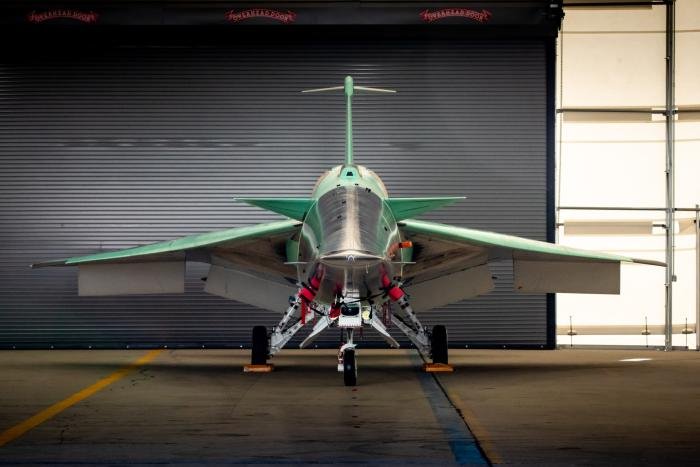
An April 2023 NASA statement explained: “To lift the ban and enable a viable market for supersonic air travel over land, the idea is that regulators would base new rules on a different standard than before. The speed limit created in 1973 didn’t consider the possibility that an airplane could fly supersonic yet did not create sonic booms that could affect anyone below. It was a fair assessment at the time because the technology required to make that happen didn’t exist yet.”
Peter Coen, NASA’s Quesst mission integration manager, said: “Instead of a rule based solely on speed, we are proposing the rule be based on sound. If the sound of a supersonic flight isn’t loud enough to bother anyone below, there’s no reason why the airplane can’t be flying supersonic.”
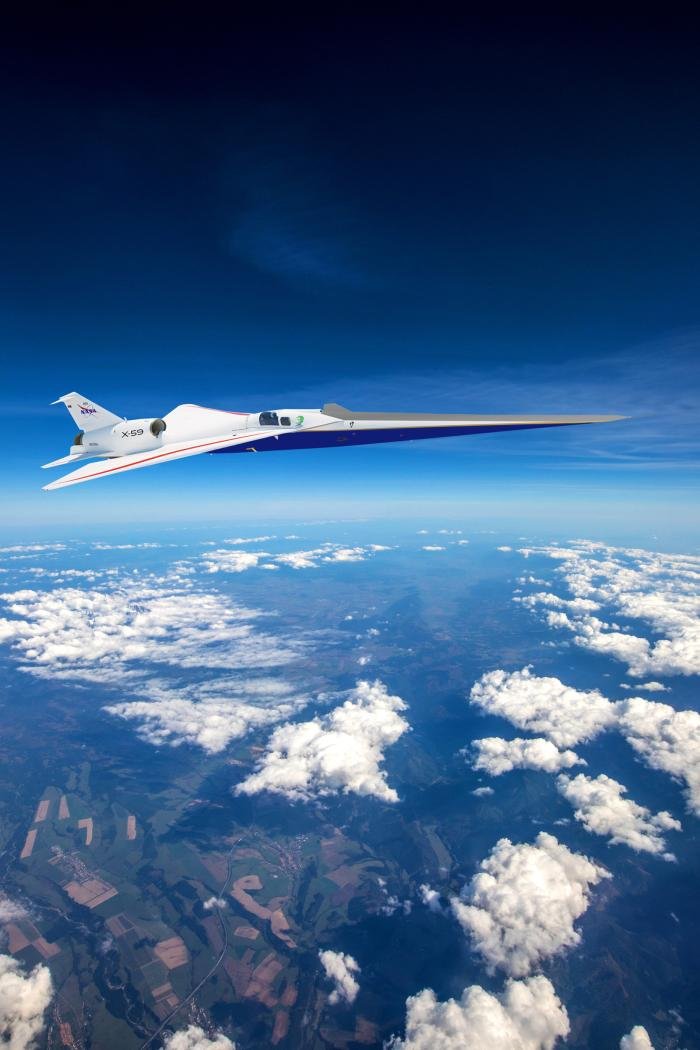
Shockwave
NASA says the way shockwaves will form around the X-59 will differ from what the agency calls a ‘conventional supersonic aircraft’.
On older aircraft, it says, multiple shockwaves merged together. The sleek X-59’s noticeably long and thin nose, however, “pierces through the air – a key design for quieting the boom,” NASA says.
Essentially, the long nose ‘stretches’ air molecules around the aircraft so the waves do not fully merge and are instead spread out. The thinking is the sound heard on the ground below the X-59 will be a quieter ‘thump’ rather than a loud boom.

So streamlined is the dart-like X-59 that the aircraft’s single pilot will not have a forward-facing window. Instead, a 4K/ultra-HD monitor developed by the NASA Langley Research Center will serve as the central ‘window’ enabling them to see their flight path while viewing flight data in augmented reality.
A computational fluid dynamics illustration released by NASA in April 2023, visualising the shockwaves coming off the X-59, was used in creating the flight planning tools and software for Quesst.
Researchers from NASA’s Armstrong Flight Research Center at Edwards Air Force Base, California, which is managing the X-59 flight test campaign, will capture images of the shockwaves the X-59 generates using a specialist technique used by NASA to photograph shockwaves from its rockets and aircraft.

Schlieren photography uses a textured background, such as the edge of the Sun or sunspots, to visualise changes in air density. As light flows around an object, the change in air density caused by the airflow bends the light, making the edge of the Sun and sunspots appear to move. Software then calculates how each spot moved to reconstruct the shockwave into an image.
Ed Haering, principal investigator for the Schlieren photography at NASA Armstrong, said in December 2022: “We want to be able to have a proven system to be able to image the shockwaves. That way we can have proof of the shockwave distribution around the X-59 that hopefully will result in the quiet thump on the ground.”
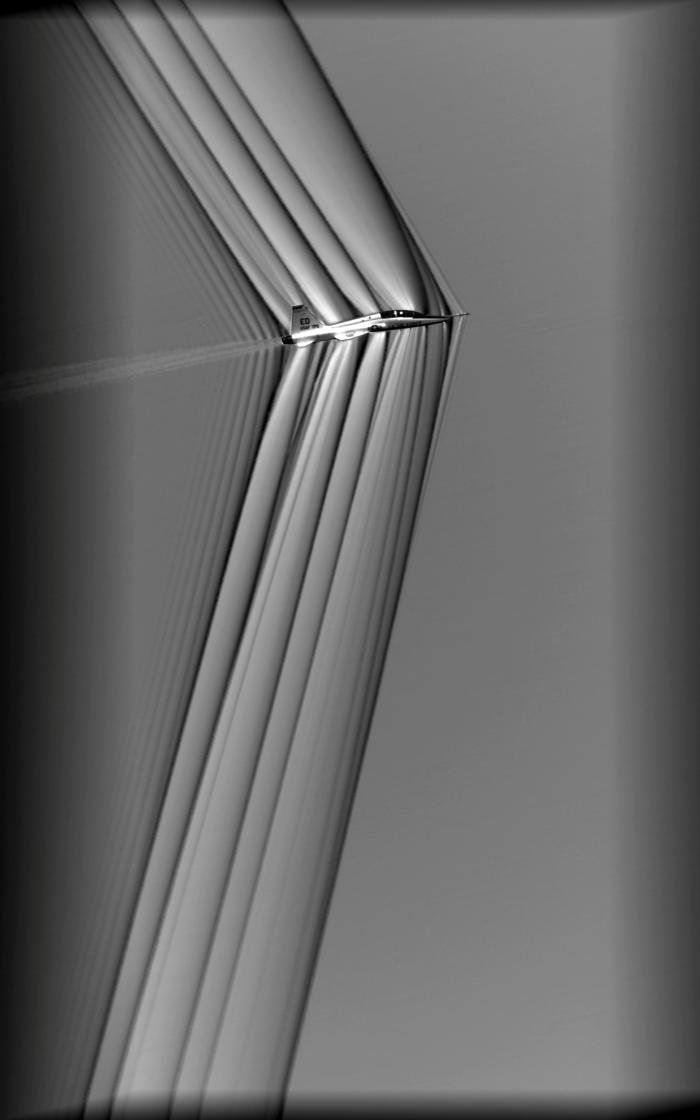
By September 2023 major structural assembly of the X-59 was complete and system check-out tests under way. Painting and rollout were planned for autumn 2023 ahead of the first flight.
Speed premium
Concorde generated revenue for British Airways – but can an airline with supersonic aircraft make it work today?
Much of the Anglo-French aircraft’s circa £2 billion development cost (1976 prices) was written off. Spike Aerospace indicates the development costs involved with supersonic aircraft development by mentioning on its website that the estimated unit price of an S-512 will be $100 million.
Any future supersonic (or hypersonic) commercial aircraft will serve the higher end of the air passenger market for business travellers, continuing the trend from the Concorde era when, Mike Bannister points out in his autobiography, 80% of passengers were businesspeople (the remainder was 10% rich and famous, 5% sportspeople and 5% trip-of-a-lifetime).
The speed premium of Concorde – the aircraft flew faster than the Earth rotates and faster than a rifle bullet – was its selling point, enabling its clientele to wake up in London and get to New York for a morning meeting.
Commercial airliners typically cruise at Mach 0.85. Top-of-the-range business jets are slightly faster – the Bombardier Global 6500 and Dassault Falcon 7X/8X cruise at Mach 0.90 and the Global 7500/8000 and Gulfstream G650/650ER can reach Mach 0.92.
Supersonic/hypersonic aircraft developers hope their designs, by surpassing these speeds, will make a difference to the time-pressed business traveller. A 2021 Boom Supersonic statement says Overture will be able to “connect more than 500 destinations in nearly half the time” as a subsonic airliner. Spike says its S-512 will cut New York-London travel times to 3.3 hours and London-Dubai to 3.2 hours. Destinus says its hypersonic design would cut the journey from Paris to New York to just 90 minutes.
Supersonic air travel however was not simply about the flight time. A comfortable experience matters – as BA showed with Concorde’s high-quality food, fine wines and stellar onboard service. Spike Aerospace claims its S-512 will offer “luxury accommodation for productivity or pleasure.”
United and American signing for Boom Overtures (at least provisionally) suggests some carriers see a market – albeit a niche one – of well-heeled travellers willing to pay a premium for ultrafast, luxurious connectivity.

Halo effect?
There could be a potential reputational benefit for operators. British Airways cited a ‘halo effect’ from offering supersonic services. “Without Concorde, we would have been another airline. Thanks to her, we’d been an airline apart,” Bannister says.
On the other hand, broadband connectivity means travellers can conduct business in flight even if they are flying at subsonic speeds – indeed, the rise of services such as Zoom and Microsoft Teams might mean they may not even have to make a journey at all.
In 2021, Forbes’ Dan Reed wrote: “Are those savings generated by the executive flying supersonically enough to justify the way higher costs? In many, maybe even most, cases the real answer is likely to be ‘no’.”
Operating supersonic airliners might pose other issues. John Strickland, the managing director of JLS Consulting who worked at BA when Concorde was in its heyday, remarked: “Even then, there were challenges.”
He explained: “New York of course was key but with other US points like Miami and Washington, DC there was not enough demand to make things profitable. Even New York is not the same all year round in business traffic. We had small seasonal operations like Barbados, but it was only a couple of flights a week.”
There were only certain routes and times where Concorde worked, Strickland says: “You have times where there isn’t demand, so what do you with your planes then?” Operators will need to have a granular understanding of travel market characteristics and routes their aircraft might serve.
And this is why the issue of overland supersonic flight and noise matters. Allowing it will give airlines much more flexibility about routes and make it cost-effective to operate supersonic aircraft.
A supersonic network might bring logistical challenges, however. Strickland points out that having Concorde operations focused at London/Heathrow was advantageous for BA in providing comprehensive engineering support and spare aircraft availability. “Splitting an already small fleet may not be ideal,” he says.
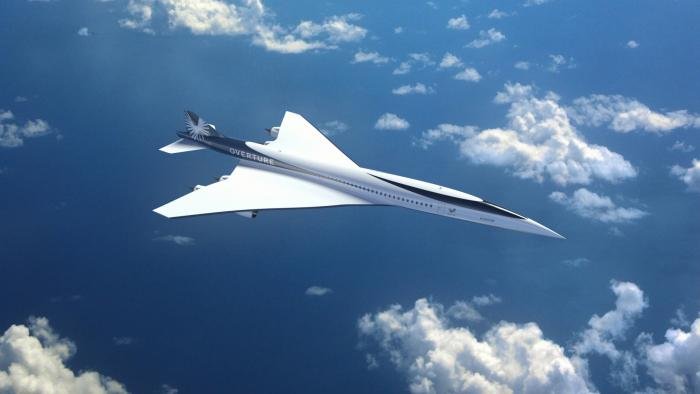
Sustainability
There is another fundamental issue – sustainability. Strickland notes: “There is concern about [supersonic] aircraft flying higher than current [subsonic] airliners. Emissions is such a big issue.”
Developers stress their environmental credentials. Boom Supersonic, for example, says the Symphony engine for Overture will be optimised for 100% sustainable aviation fuels and feature a single-stage fan “designed for quiet operation.” Destinus says its hypersonic design will use hydrogen fuel.
Strickland notes the environment “wasn’t really around in Concorde’s day” quite how it is today in the corporate world. Environmental, social and governance (ESG) criteria is prominent.
Crucially, business investment decisions are increasingly linked to sustainability. For example, Rob Desborough, managing partner and CEO of the commercial space venture capital fund Seraphim, told the 2022 Royal Aeronautical Society New Space Conference that when the company floated on the London Stock Exchange in 2021: “It was the first question from the capital markets – ‘what are you doing from an ESG perspective?’.”
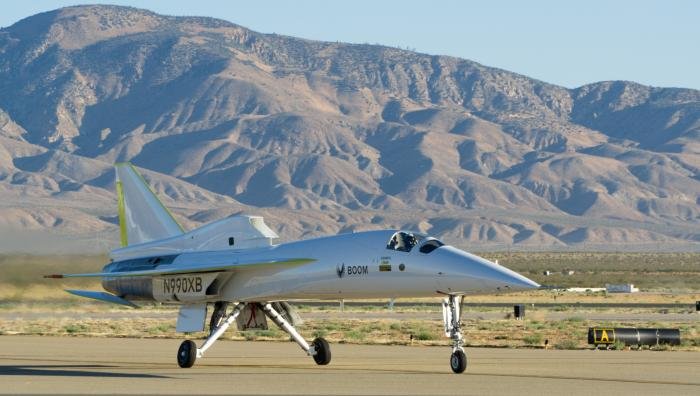
For all the glamour of supersonic flight, does it really align with modern times? The issue of how supersonic flight fits with wider business trends could be an issue in it becoming an everyday reality. Companies may “have been previous customers for a fast supersonic airliner – now they may not,” Strickland observes. Any new thoroughbred supersonic aircraft will have to be sustainable as well as speedy.
If you liked this article, the full bookazine is available from Key Publishing Shop

